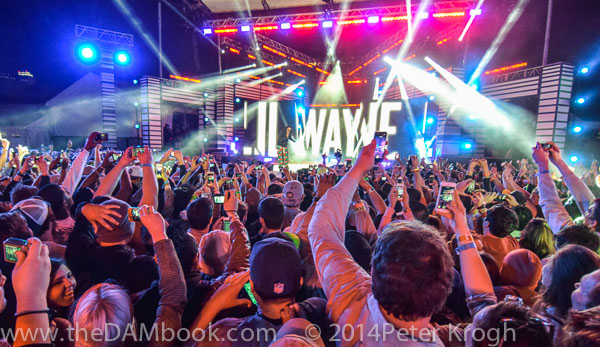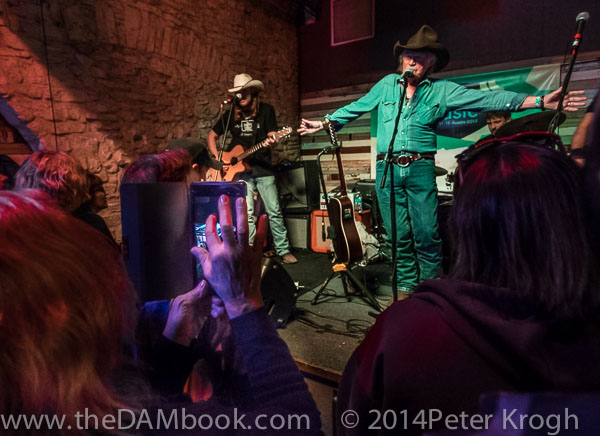Musings on the Semiotics of Connected Photography
Dateline SXSW – Most people have heard of “Second Screen”. Typically, that refers to the practice of checking out Twitter or Facebook while watching television. It’s a type of engagement that is most common during live broadcasts like sports events or the Oscars. While some people may disparage the practice, there’s a pretty obvious value proposition there. Television does not offer two-way engagement, and people want to engage. So they naturally use what they can to make it happen.
Now I’d like to turn to those people who shoot pictures at concerts, weddings, dinners or other events. I’m not talking only about selfles. I’m also talking about the people in the crowd who pull out their cell phones and shoot outward-facing photos or videos. These folks are often dismissed as “not living in the moment” or something similar. “Why,” some ask, “can’t these people just experience the event without having to photograph everything that happens.
Same as it ever was
On an immediate and obvious level, I’d be a hypocrite to level such criticism. For nearly 40 years, I have used photography as a key to my own engagement with events. When I go to a friend’s wedding, I’ll probably shoot lots of pictures, and even get special access. I don’t just attend. I participate. I engage. By using photography.
And there is longstanding precedent for photography to validate any experience. People pay wedding photographers handsomely because the documentation of the event is a marker of value. Before photography, people hired painters. “We stand in witness of this promise, and these pictures prove it.” The role of the photographer is essential here – it is true and important participation in the process. Not only does it provide memory, it provides validation. And now, when something notable happens, up go the phones.
 I shot this photo at the MTV Woodie awards. As soon as surprise guest Lil Wayne came onstage, a huge wave went through the crowd, and all the phones were held high, capturing the moments.
I shot this photo at the MTV Woodie awards. As soon as surprise guest Lil Wayne came onstage, a huge wave went through the crowd, and all the phones were held high, capturing the moments.
It’s not only large venues where this happens. I was at a really intimate performance of Billy Joe Shaver, a songwriting legend who plays small clubs with his band. Billy Joe is so close you could actually touch him, although that would probably not be welcome, (depending on who you are.) And so the ubiquitous phones are held high, shooting photos and videos throughout.
And then I shot this photo, which really rolled up the whole concept for me. In it, the photographer reaches out and touches Billy Joe, if only on the screen. She connects with the performer, and probably her friends and family, sharing the experience, and providing real and important engagement for herself and her tribe. This provides her with an experience that is not possible, exactly, IRL. (In Real Life)

The photo illustrates to me the additional layer of importance that connected photography adds to the live experience. One one level it’s exactly the same as the photographer’s role I’ve been playing for decades. On another level, it’s a much deeper and more engaged experience. You can interact with your tribe. Or you can simply raise up a flag for the world to see, “I am here and I’m a part of this.”
So, what do we call this?
In order to understand a thing, it’s important to have a name for it, and I can’t seem to find a name for this phenomenon. We can describe Second Screen as the use of a social media device in conjunction with some kind of one-way broadcast. And selfie is well-understood as a self portrait used to document your participation in some event and then shared through social media.
But we don’t seem to have a term for “shooting photos or video at a live event as a means of engagement, sharing or documentation.” You could just call it “taking pictures”, but in the world of connected photography, I think it’s deeper than that. I think this action has meaning on multiple levels. It’s about interaction with your people, present or remote. It’s about your own personal memory-keeping. It’s about feeling as though you are actively participating in the event – processing it through your own point of view and creating something new and yours – a photograph.
So, I want a name for this thing. I titled the post Live Second Display. Live, because it’s about creating something during an event. Second because it is an auxiliary experience to the main experience. Display because that term could encompass both the event and the device you are using. And because it acronyms out nicely, if confusingly. I’m not suggesting that LSD is the right term, only that there should be a term.
I’d like a name for this. Anybody know one I’m missing? Any other suggestions? Let’s engage.
